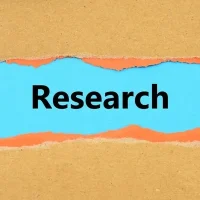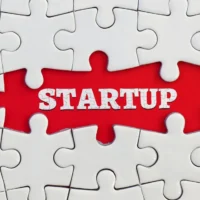Deadline: 19-Jun-24
Being is looking to fund bold prevention and promotion ideas that address the early drivers of mental health and wellbeing for the most underserved 10- to 24-year-olds.
Being seeks to fund innovative solutions that meet the context-specific upstream drivers of young people’s mental health and wellbeing along with ecosystem-level efforts that address the broader systemic barriers that hinder sustainable implementation and broader integration of mental health and wellbeing promotion and prevention initiatives.
Pillars
- There are three main pillars of work within Being:
- Learn – They believe learning is a driver for systems change. The research funding and programming aims to understand young people’s mental health needs and drivers in each priority country, help build consensus around priorities for advocacy and funding, and guide funding priorities in research, innovation, and ecosystem building. Additionally, they want to increase the understanding and anticipate the long-term impacts of emerging stressors, like emergencies, urban growth, pandemics, and climate change, on young people’s mental health and wellbeing.
- Invest – They fund and support youth-led organizations to address the drivers of young people’s mental wellbeing identified through the invest pillar. With a focus on prevention and promotion, they invest in new ideas as they’re tested and proven. They also support tested high-impact innovations targeting youth mental health and wellbeing along their scaling journey to help catalyze their sustainability and impact.
- Mobilize – They aim to unite donors, funders, investors, governments, multilateral scaling partners, local intermediaries, and communities by promoting the ongoing exchange of new evidence, innovation and learnings to advance global dialogue and advocate for young people’s wellbeing. They also fund ecosystem building grants to help address systemic barriers preventing long-term implementation and integration of mental health services into related health, policy, and other areas.
Grand Challenges Canada’s Mental Health Work
- Grand Challenges Canada has supported one of the largest portfolios of global mental health innovations in the world. Supported by Global Affairs Canada through the Department of Foreign Affairs, Trade and Development (DFATD), the United Kingdom’s Department of Health and Social Care (DHSC) through the National Institute for Health Research (NIHR), and Fondation Botnar, Grand Challenges Canada has invested $63 M CAD to support 151 projects across 47 LMICs over the last 11 years.
- Grand Challenges Canada’s ongoing global mental health portfolio includes Proof of Concept innovations aimed at meeting the mental health needs of the most underserved 10- to 24-yearolds, using culturally sensitive and community driven approaches to enhance mental health literacy and provide youth-friendly mental health services. The current portfolio also includes Transition to Scale innovations focused on bold solutions that provide evidence-based, personcentred mental health interventions in community-based settings across the life span.
Types of Funding
- Proof of Concept (POC)
- POC General Scope
- Proof of Concept (POC) funding of up to $250,000 CAD over 15, 18 or 24 months is available under the RFP. POC funding supports early-stage innovations to test and refine bold ideas. POC funding not only prioritizes innovations focused on young people, it also prioritizes applications from organizations that are primarily led by young people. The goal of these innovations is to strengthen the pipeline of tested mental health innovations targeted at young people that are developed and managed by young people themselves.
- Areas Of Focus
- Being seeks Proof of Concept innovations that:
- Focus on the prevention and promotion aspects of youth mental health needs,
- Are age and stage appropriate, given the wide age range of the target population (i.e. 10 – 24 years),
- Aim to support and amplify the voices of young people,
- Deliver mental health supports through youth-friendly, health and non-health mechanisms (such as schools), and
- Meet people where they are by integrating mental health and/or wellbeing interventions into existing education or social care systems.
- POC innovations should seek to integrate one or more of the following cross-cutting themes:
- Tackle the outcomes of damaging gender norms and consider the mental health needs of people with diverse sexual and gender identities;
- Consider the distinct mental health needs arising from intersecting experiences of discrimination and marginalization across various identities (such as socio-economic status, religion, etc.);
- Acknowledge the influence of power differentials on young people’s mental health and consider the limited agency and autonomy faced by young people;
- Address stigma and discrimination related to mental illness with a specific focus on stigma experienced by young people.
- Being seeks Proof of Concept innovations that:
- POC Priority Health Outcomes
- Being seeks bold ideas that improve the mental health and wellbeing of the most underserved 10- to 24-year-olds in the 12 priority countries.
- In general, prevention and promotion initiatives may achieve this through one or more pathways. For example, initiatives may directly target youth mental health and wellbeing; they may address stigma, attitudes and practices; they may also aim to tackle access to the wider social and environmental determinants of youth mental health and wellbeing, such as but not limited to parenting practices or employment.
- Additionally, improvements in mental health and wellbeing for young people may look different across contexts and may have a variety of approaches to measurement. Successful applications will clearly define at least one relevant priority health outcome that the innovation will set out to achieve, with clear plans to track progress using appropriate measurement tools.
- Below are some examples of priority health outcomes that innovations may set out to achieve. This is not a comprehensive list of priority health outcomes that can be achieved through prevention and promotion initiatives. They welcome applications with other relevant priority health outcomes:
- Improved wellbeing
- Improved life satisfaction
- Improved emotional regulation
- Improved connectedness
- Improved social capital
- Improved self esteem
- Improved coping
- Improved self-efficacy
- Improved resilience
- Effects on knowledge (ex. mental health literacy)
- Effects on attitudes (ex. reductions on stigmatizing attitudes)
- POC Target Users
- POC innovations must ultimately benefit the most underserved 10- to 24-year-olds in at least one of the 12 priority countries; however, they may choose to focus on a specific age group within the range of 10- to 24-year-olds. Projects should take into consideration the wide developmental range between 10 and 24 years of age and consider which types of interventions are best aligned with the developmental needs of specific age groups. Innovative solutions should be targeted to the most relevant age group for the country specific area of focus.
- While young people are the primary target beneficiaries, certain countries may include parents/caregivers, community leaders, teachers or school counsellors as secondary target beneficiaries.
- POC Integrated Innovation
- They encourage proposals for innovation in all forms: technologies, products, services, processes, business models, policy approaches and/or delivery mechanisms.
- Projects are encouraged to have an Integrated Innovation® approach that coordinates scientific/technological, social and/or business innovation, to develop solutions to complex challenges. This does not discount the singular benefits of each of these innovation types, but instead highlights the powerful synergies of aligning any of the three. Therefore, your solutions should include any of the following three areas:
- Scientific/technological innovation: has a base in the psychological, natural, health or behavioral sciences or in engineering or economics; can be simple as there is no requirement for high-tech solutions.
- Social innovation: recognizes and/or addresses the broader social, structural and/or political determinants of health, with a particular focus on gender and intersectional inequalities; addresses local and/or cultural contexts that factor into implementation and scaling.
- Business innovation: maximizes the value, relevance and unique quality of the solution to create demand and financial sustainability; addresses barriers to affordability and accessibility.
- Eligibility Criteria
- Eligible applicants include legally recognized organizations (e.g. social enterprises, nonprofit, for-profit, limited liability companies, research/academic institutions) that:
- are formed and legally incorporated
- can successfully perform activities in their technical area
- can receive and administer funding
- Eligible applicants include legally recognized organizations (e.g. social enterprises, nonprofit, for-profit, limited liability companies, research/academic institutions) that:
- Ineligible
- The following are ineligible:
- Individuals
- Sole proprietorships
- Unincorporated trusts and partnerships
- Government organizations
- United Nations country offices
- The following are ineligible:
- POC General Scope
- Transition to Scale (TTS)
- TTS General Scope
- At Transition to Scale (TTS), Being will support promising innovations that have achieved proofof-concept or demonstrated initial positive results of the innovation and have significant potential to achieve sustainable impact at scale or as it reaches more people. The goal is to support innovators to Transition to Scale through the ‘missing middle’ with funding offered between $300,000 CAD and $1,500,000 CAD over 12–48 months.
- There are different possible objectives for TTS funding based on the stage of development of the innovation:
- Generate evidence of impact needed for scale-up, and/or address gaps in existing evidence (e.g. through validation studies)
- Advance planning for scale and sustainability (develop or validate a viable plan, business model, etc.)
- Build organizational capacity needed to scale
- Grow and strengthen strategic partnerships, including diversified funding sources needed for scale, and/or smart partners towards a sustainable end game
- Begin scaling in new or expanded geographies, and/or with new partners
- Areas of Focus
- Being seeks TTS innovations that:
- Focus on the prevention and promotion aspects of youth mental health
- Are age and stage appropriate, given the wide age range of the target population (i.e. 10 – 24 years)
- Aim to support and amplify the voices of young people
- Deliver mental health supports through youth-friendly, health and non-health mechanisms
- Meet people where they are by integrating mental health and/or wellbeing interventions into existing education or social care systems
- TTS innovations should seek to integrate one or more of the following cross-cutting themes:
- Tackle the outcomes of damaging gender norms and consider the mental health needs of people with diverse sexual and gender identities;
- Consider the distinct mental health needs arising from intersecting experiences of discrimination and marginalization across various identities (such as socio-economic status, religion, etc.);
- Acknowledge the influence of power differentials on young people’s mental health and consider the limited agency and autonomy faced by young people;
- Address stigma and discrimination related to mental illness with a specific focus on stigma experienced by young people; and/or
- Creatively leverage technology that is highly used and trusted by young people, while considering rigorous monitoring and evaluation and tracking of priority outcomes.
- Being seeks TTS innovations that:
- TTS Priority Health Outcomes
- Being seeks bold ideas that improve the mental health and wellbeing of the most underserved 10- to 24-year-olds in priority countries.
- In general, prevention and promotion initiatives may achieve this through one or more pathways. For example, innovations may directly target youth mental health and wellbeing; they may address stigma, attitudes and practices; they may also aim to tackle access to the wider social and environmental determinants of youth mental health and wellbeing, such as but not limited to parenting practices or employment.
- Additionally, improvements in mental health and wellbeing for young people may look different across contexts and may have a variety of approaches to measurement. Successful applications will clearly define at least one relevant priority health outcome that the innovation will set out to achieve, with clear plans to track progress using appropriate measurement tools.
- Here are some examples of priority health and wellbeing outcomes that innovations may set out to achieve. This is not a comprehensive list of health and wellbeing outcomes that can be achieved through prevention and promotion initiatives. They welcome applications with other relevant health and wellbeing outcomes.
- Improved wellbeing
- Improved life satisfaction
- Improved emotional regulation
- Improved connectedness
- Improved social capital
- Improved self esteem
- Improved coping
- Improved self-efficacy
- Improved resilience
- Effects on knowledge (ex. Mental health literacy)
- Effects on attitudes (ex. Reductions on stigmatizing attitudes)
- TTS Target Users
- TTS innovations must ultimately benefit the most underserved 10- to 24-year-olds in at least one of the 12 priority countries, however they may choose to focus on a specific age group within the range of 10- to 24-year-olds. Projects should take into consideration the wide developmental range between 10 and 24 years of age and consider which types of interventions are best aligned with the developmental needs of specific age groups. Innovative solutions should be targeted to the most relevant age group for the country specific area of focus.
- While young people are the primary target beneficiaries, certain countries may include parents/caregivers, community leaders, teachers or school counsellors as secondary target beneficiaries.
- TTS Integrated Innovation
- They encourage proposals for innovation in all forms: technologies, products, services, processes, business models, policy approaches and/or delivery mechanisms.
- Projects are encouraged to have an Integrated Innovation® approach that coordinates scientific/technological, social and/or business innovation, to develop solutions to complex challenges. This does not discount the singular benefits of each of these innovation types, but instead highlights the powerful synergies of aligning any of the three. Therefore, your solutions should include any of the following three areas:
- Scientific/technological innovation: has a base in the psychological, natural, health or behavioral sciences or in engineering or economics; can be simple as there is no requirement for high-tech solutions
- Social innovation: recognizes and/or addresses the broader social, structural and/or political determinants of health, with a particular focus on gender and intersectional inequalities; addresses local and/or cultural contexts that factor into implementation and scaling
- Business innovation: maximizes the value, relevance and unique quality of the solution to create demand and financial sustainability; addresses barriers to affordability and accessibility.
- Eligibility Criteria
- Grand Challenges Canada will screen all funding applications on the basis of the eligibility criteria outlined below. Applications that do not meet the eligibility criteria will be removed from the review process. The eligibility criteria are listed below:
- Eligible applicants include legally recognized organizations (e.g. social enterprises, nonprofit, for-profit, limited liability companies, research/academic institutions) that:
- Are formed and legally incorporated
- Can successfully perform activities in their technical area
- Can receive and administer funding
- Ineligible
- The following are ineligible:
- Individuals
- Sole proprietorships
- Unincorporated trusts and partnerships
- Government organizations
- United Nations country offices
- The following are ineligible:
- TTS General Scope
- Ecosystem Catalyst (EC)
- EC General Scope
- One of the ultimate outcomes of Being is to strengthen country ecosystems for youth mental health. To achieve this objective, efforts are needed to address the broader systemic barriers that hinder sustainable implementation; promote broader integration of mental health and wellbeing into adjacent areas; and begin to build local demand for youth mental health and wellbeing products and services. This requires ecosystem-level solutions. Ecosystem Catalyst funding is intended to support national and sub-national level activities that strengthen local ecosystems for youth mental health and related innovations and foster an enabling environment that can help prevention and promotion initiatives thrive and scale.
- Ecosystem Catalyst funding between CAD $200,000 – $300,000 over 24 months is available. They acknowledge that this type of systems changes takes longer than this timeframe, so there will be potential for renewal funding in priority areas.
- Ecosystem Catalyst project teams are expected to have experience in:
- Data analysis and knowledge translation;
- Influencing positive systemic change;
- Supporting, and/or advocacy for, scale-up of mental health and wellbeing solutions;
- Engaging with innovators and/or innovator networks;
- Public and multi-sector engagement; and
- Monitoring, evaluation and learning.
- EC Collective Goal and Priority Outcomes
- Each Being country faces unique barriers that hinder sustainable implementation of innovations; constrain the broader integration of mental health and wellbeing; and limit local demand for youth mental health and wellbeing prevention and promotion initiatives. In turn, the collective goal of Ecosystem Catalyst (EC) projects is to build the country’s enabling ecosystem for prevention and promotion initiatives and related innovations for youth mental health and wellbeing.
- Within each priority country, successfully striving towards this collective goal may include, but is not limited to, achieving priority outcomes such as:
- Written changes in mental health related policies, procedures, and/or regulations;
- Improved coordination among key stakeholders working to secure mental health improvements;
- Increased government budgetary allocation to mental health priorities;
- Increased private sector investment in mental health priorities;
- Numerical and qualitative measures of increased mobilization of local demand for the scale-up of effective innovations.
- EC projects will be expected to leverage significant existing networks and infrastructure/capacities.
- EC Target Users
- EC projects must focus on national and/or sub-national level activities that strengthen local ecosystems and address barriers for youth mental health and wellbeing and related innovations.
- Given this focus, target users will involve a range of actors and may include:
- National government decision-makers and departments
- Global agencies supporting young people’s mental health in priority countries
- Public sector representatives at national, sub-national, and local levels
- Advocacy organizations
- Community service organizations
- Public and private funders supporting young people’s mental health and wellbeing programming
- Key influencers and community leaders
- Other youth mental health stakeholders, including youth and people with lived experience of mental illness.
- Eligibility Criteria
- Grand Challenges Canada will screen all funding applications on the basis of the eligibility criteria outlined below. Applications that do not meet the eligibility criteria will be removed from the review process. The eligibility criteria are listed below:
- Eligible applicants include legally recognized organizations (e.g. social enterprises, nonprofit, for-profit, limited liability companies, research/academic institutions) that:
- Are formed and legally incorporated
- Can successfully perform activities in their technical area
- Can receive and administer funding
- Grand Challenges Canada will screen all funding applications on the basis of the eligibility criteria outlined below. Applications that do not meet the eligibility criteria will be removed from the review process. The eligibility criteria are listed below:
- Ineligible
- The following are ineligible:
- Individuals
- Sole proprietorships
- Unincorporated trusts and partnerships
- Government organizations
- United Nations country offices
- The following are ineligible:
- EC General Scope
Eligibility Criteria
- Each applicant must meet the following criteria in order to be eligible for consideration for this request for proposals:
- Organizations must be legally incorporated (or the equivalent) and based in any country in order to be eligible to apply for funding through this RFP; and
- Only organizations implementing their project in at least one of Being’s 12 priority countries (Colombia, Ecuador, Ghana, India, Indonesia, Morocco, Pakistan, Romania, Senegal, Sierra Leone, Tanzania, and Vietnam) will be considered; and
- Preference will be given to eligible organizations according to the following order of criteria (1 being the most preferred):
- Youth-led organizations based in one of 12 priority countries. This includes organizations in which fifty percent (50%) or more of the individuals in key leadership positions (such as senior management, Board of Directors, Chief Executive Officer, Chief Operating Officer) are youth 35 years and under.
- Organizations based in one of Being’s 12 priority countries.
- Organizations based in a low- and middle- income country that are collaborating with a locally-based organization in at least one of Being’s 12 priority countries.
- Other eligible organizations.
For more information, visit Being.









































